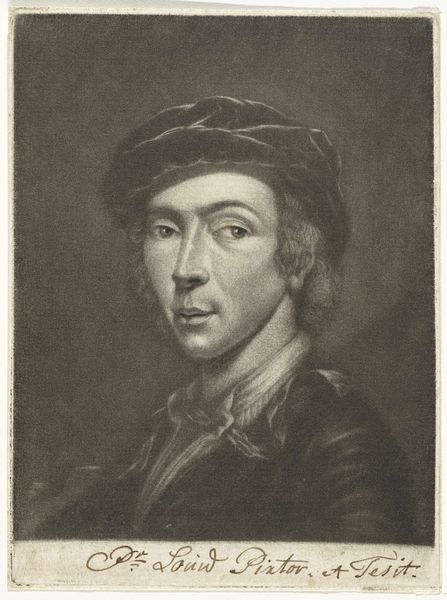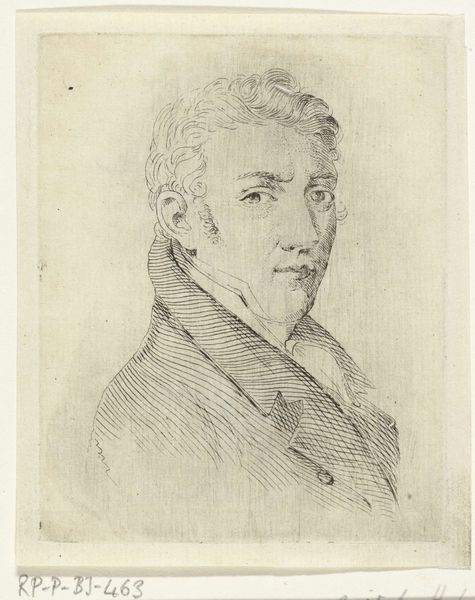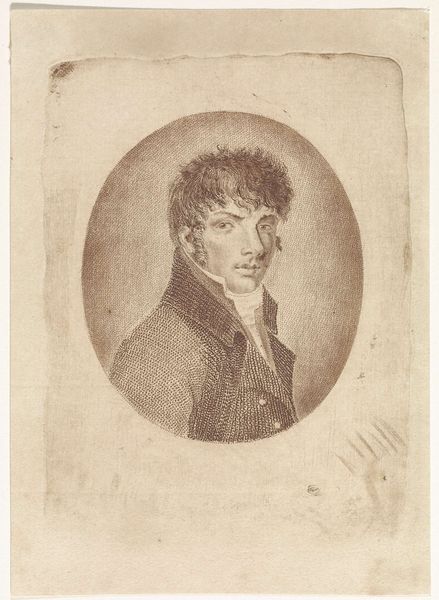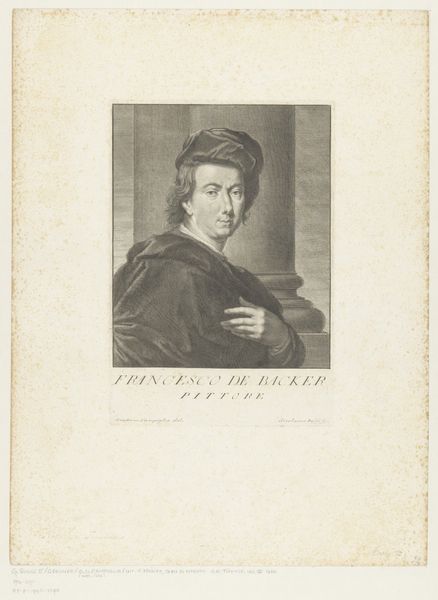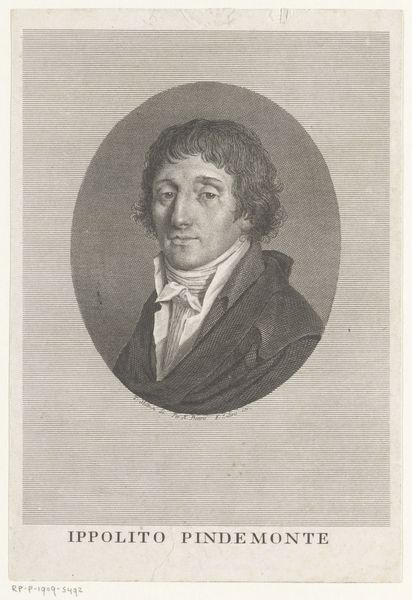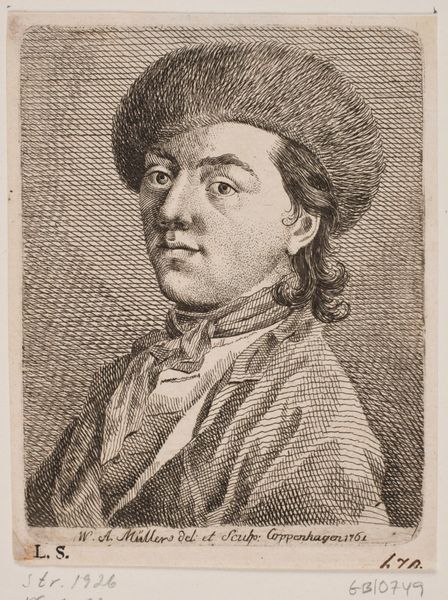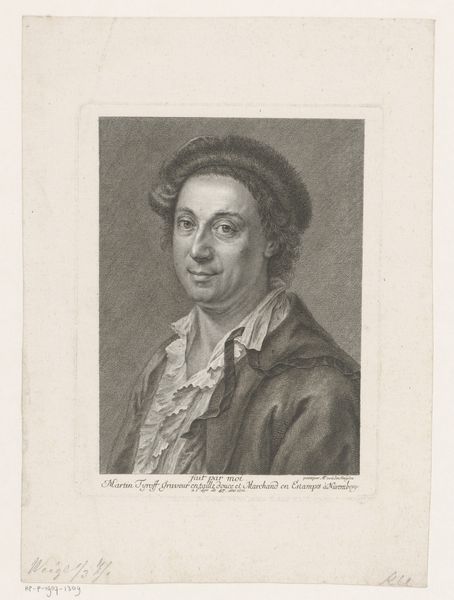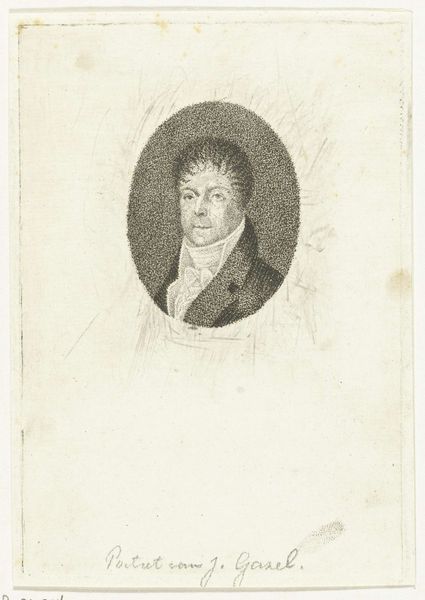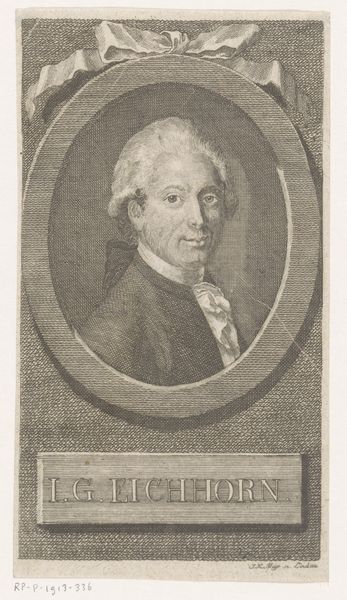
Frontispiece Portrait (Seventeen Small Illustrations for Samuel Butler's Hudibras) 1726
0:00
0:00
drawing, print, engraving
#
portrait
#
drawing
#
baroque
# print
#
old engraving style
#
men
#
engraving
Dimensions: sheet (trimmed within plate): 4 1/2 x 2 13/16 in. (11.5 x 7.1 cm)
Copyright: Public Domain
Curator: William Hogarth produced this engraving, "Frontispiece Portrait (Seventeen Small Illustrations for Samuel Butler's Hudibras)" in 1726. What are your initial thoughts on this work? Editor: My first impression is melancholy, there is a kind of solemn vulnerability to the portrait. The subject's averted gaze and the delicate line work really bring that out. What stands out to you? Curator: The materiality is captivating. Hogarth’s masterful handling of the engraving process—look at the precision and density of the lines that create form and shadow. Consider, too, the broader context: engraving was a key method for disseminating images in the 18th century, influencing print culture and even copyright laws as the emerging middle class gained access to affordable art and reproduced images. Editor: Yes, and this portrait's social and political backdrop matters significantly. It memorializes Samuel Butler, whose satirical poem *Hudibras* challenged the powerful Puritan establishment of its time, but it does so long after Butler’s death when it no longer poses a risk to its artist, which speaks to changing cultural values, but also class mobility, since prints and satirical images were used to critique social behaviors, and the political status quo, thus playing an active role in cultural formation, something this image is quite literally a frontispiece to. Curator: Indeed, the image gains power by engaging this broader narrative and becoming something like a cultural artifact. And from a maker's perspective, the tools and the printing processes themselves are crucial elements of production here, as labor practices and access to materials had an impact on artistic production. Editor: The subtleties, such as the slight tilt of his head and the soft folds of the turban, contribute to the complex characterization of the sitter as both intellectual and, perhaps, a bit world-weary. This makes you think about visibility then and now and whom gets to decide whose image and story are relevant. Curator: I appreciate the attention to labor because I am always trying to think about production. Ultimately, the piece leaves me thinking about the tangible skill that lies beneath this representation, and the world of production it took to get this into circulation. Editor: And I leave with the weight of representation and memorialization that such portraits embody. The ways artists contend with, resist, and reflect the politics of their day are always significant.
Comments
No comments
Be the first to comment and join the conversation on the ultimate creative platform.



